11 Old Photos That Show How Much Work Has Changed Since the 1800s
It was a different world.
Back breaking work of many kinds still exists in the modern era, but everything from factory work to paving roads to cleaning has gotten so much easier than in the previous centuries. We have better machines, labor laws, and best practices that mean we get more done in a shorter amount of time. For those employed in the 19th century and earlier the realm of work was often a tedious one. Workers could toil for 12 hours a day at some jobs and apprentices often made little or no money. Some people learning a new skill or trade even owed money to their mentors or journeymen after working for them for years. Here are 11 Daguerreotypes from the mid-1800s that show some of the ways in which work was quite different to the modern world.
The Peddler Gets a Workout
This peddler carries two trunks and has a neck brace to help him to do, not entirely unlike a milkmaid’s yoke. Imagine lugging these around all day with no cart, on foot. They must have been heavy – even heavier if no one bought anything that day!
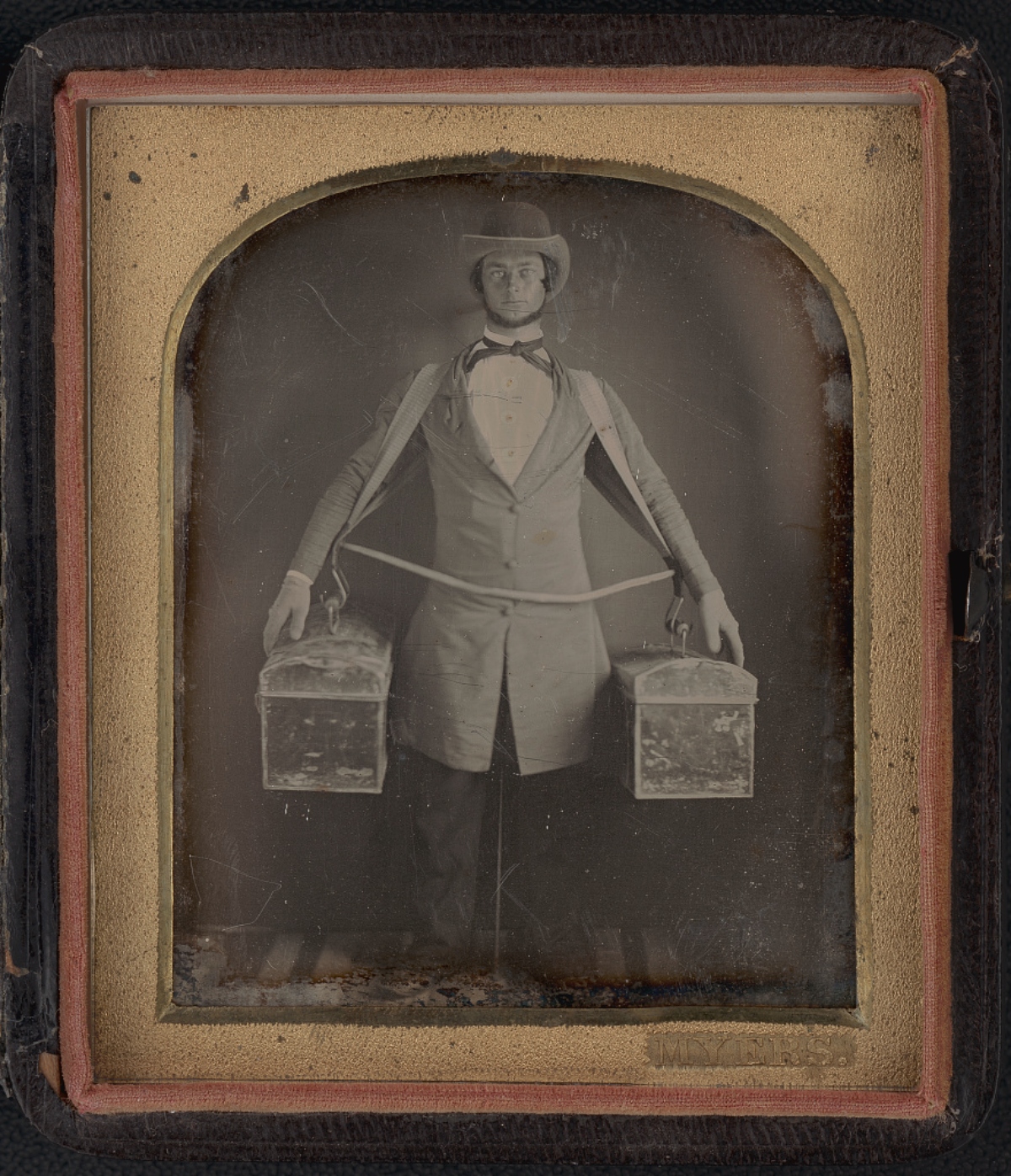
Handcrafted Barrels
This cooper working on a barrel really brings it home that even storage containers had to be made by hand. There was no going down to the local Bed, Bath, & Beyond for some storage solutions. Instead, you’d head to your local cooper to make your barrels and buckets. Here the cooper is using a wooden wedge to adjust the wooden bands keeping this barrel together.
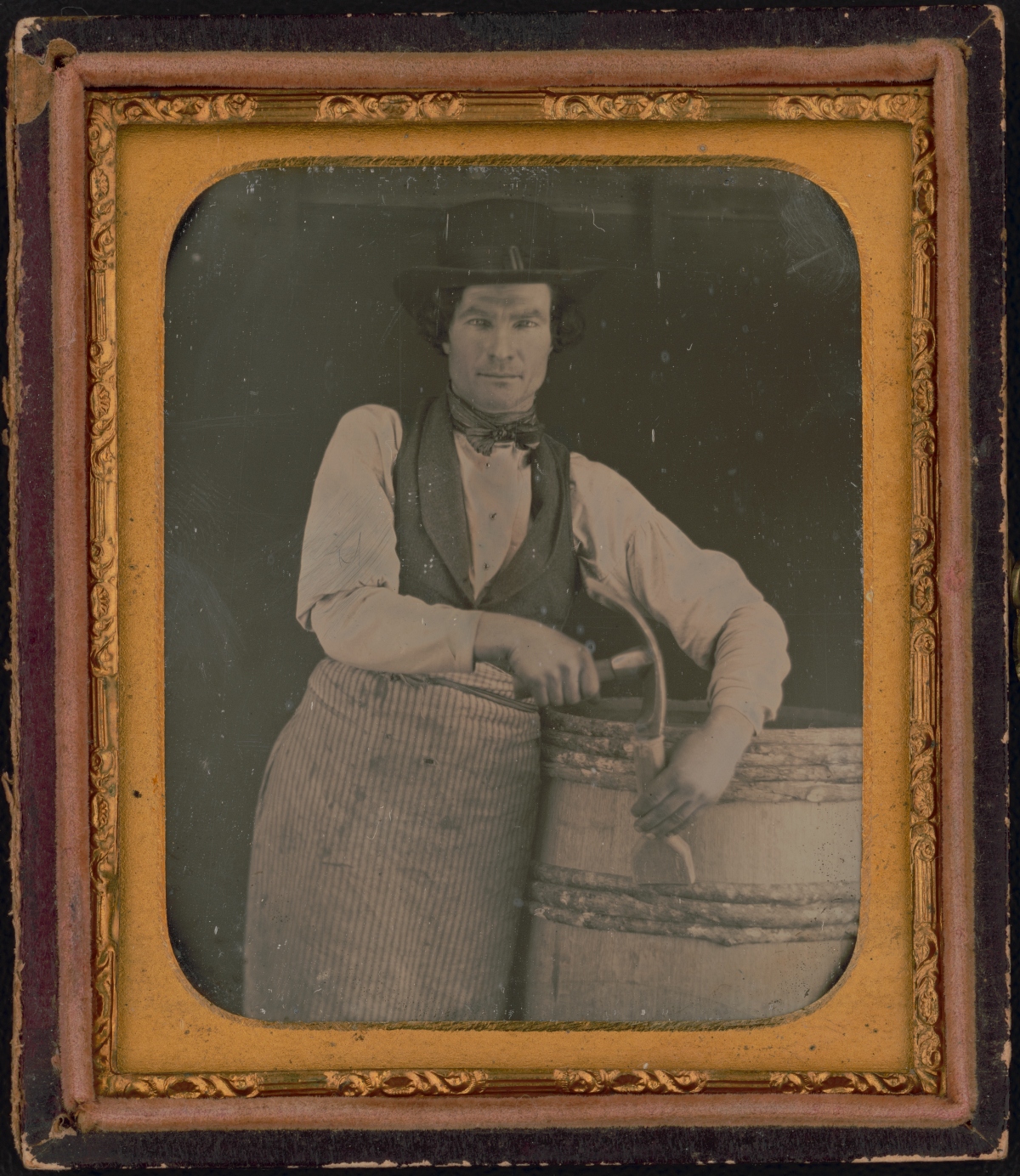
Woman’s Work is Never Done
This photo of a cleaning woman gives up hints of just how much work was involved in keeping homes and businesses clean. She wears a scarf around her hair to keep the dust and dirt off. Since baths were not as common this was how working women kept themselves neat. Likewise brushing the hair got rid of the dust, which is why it was such an important part of the 19th century beauty routine.

Shoes Made to Order
Before factories churned out shoes using motorized lasting machines, cobblers made and repaired shoes completely by hand. It took many, many hours to make a single pair of shoes this way.
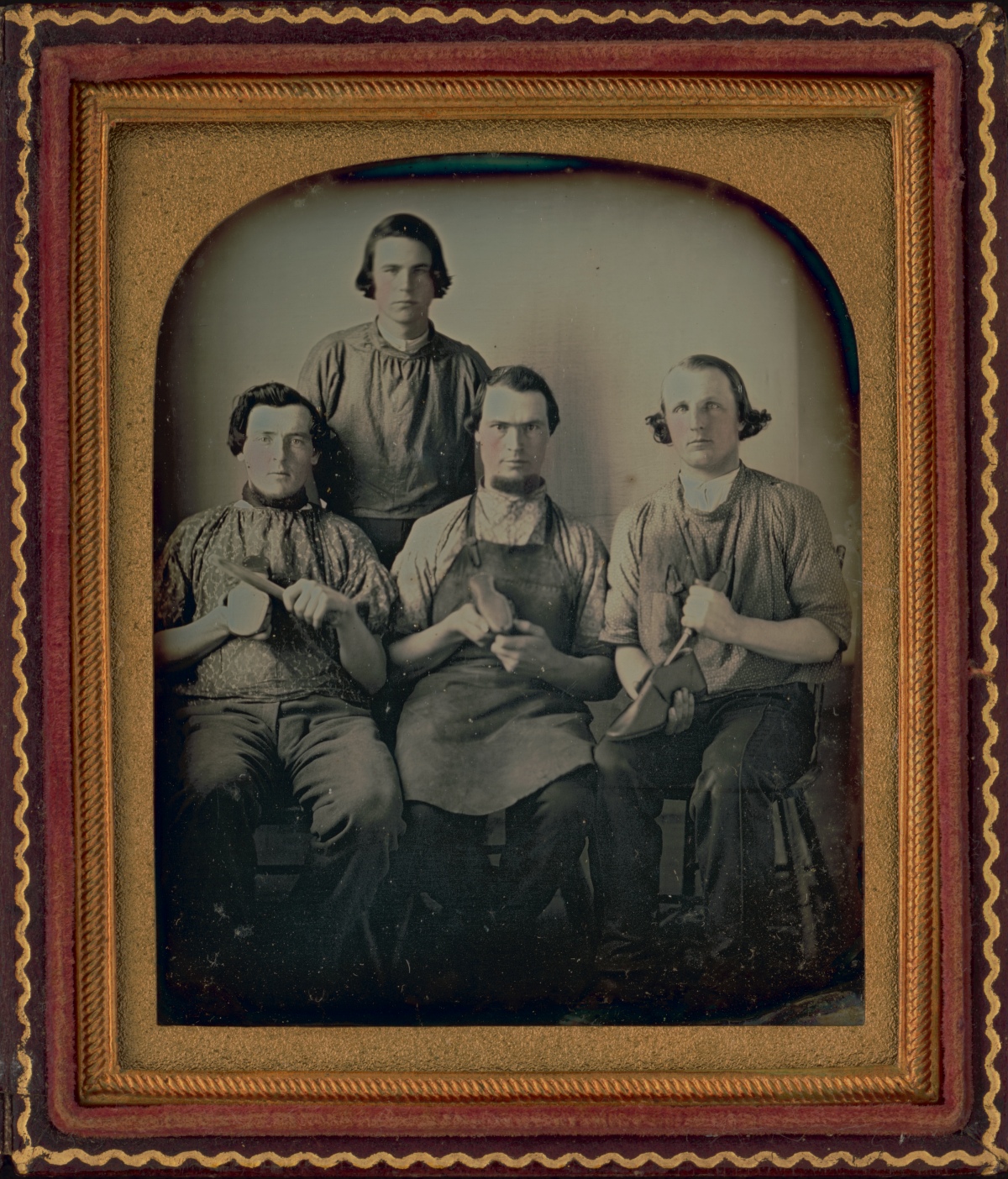
State of the Art Lockmakers
This latchmaker with a lock shows off his product. Proper locks like this one were not that common in the mid-1800s as many families simply couldn’t afford them. Common door locks were often made of wood or leather, so metal ones with keys were quite fancy.

Door-to-door Salesman
A little less burdened than the peddler was the door-to-door salesman. Often selling smaller and more expensive items, his initial investment would have been higher, but his load much lighter and his profits more handsome.
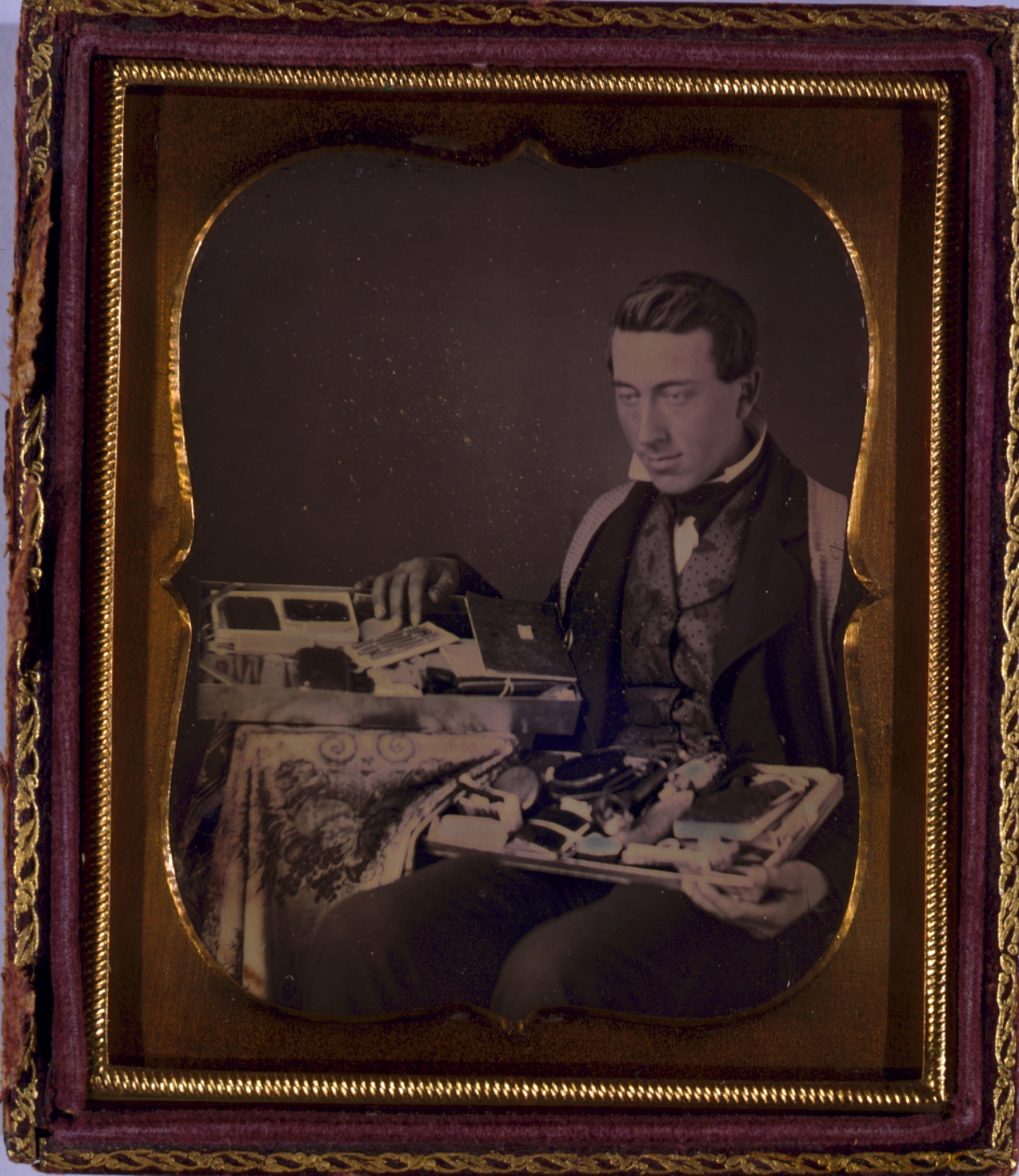
Pumping Down the Tracks
These railroad workers on a hand-crank car perfectly illustrate just how demanding and dangerous working on the railroad used to be. Steam engines powered by coal ran the locomotives and passenger cars, but when rail workers needed to get short distances they often used these small, hand-pump cars with no safety guards or protection from the elements.

Cast Iron for the Masses
Cast iron was a staple of 19th century cookware and household goods. The innovative sand casting method was pioneered by the Dutch in the early 1700s, but was crucial to all cast iron production in the 1800s. The molds were made of sand which had to be tamped down very firmly. These foundry workers with tampers (“floor rammers”) for packing sand into molds look bedraggled and unkempt compared to some of the other professions since this was sweaty, hard work.

Before Power Tools
It’s hard to imagine a world before power tools, but for millennia stonecutters helped to build the cities of the world with only a few tools at hand. This man has a chisel and mallet with which to work a block of stone.
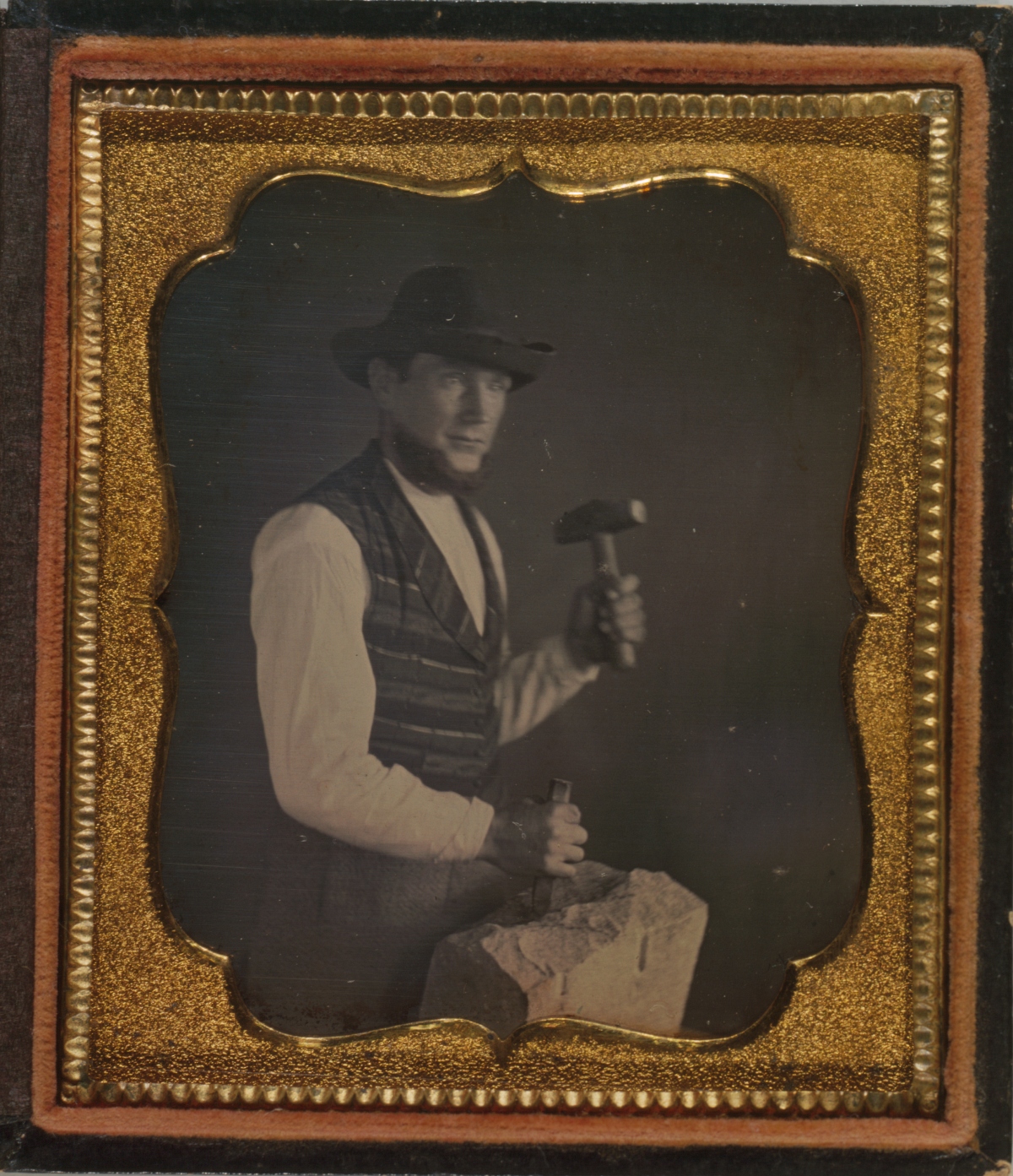
The Tinker’s Trade
This photo of a tinsmith at work shows a well-dressed man making small fineries from tin. But this trade in tin goes back many hundreds of years before this photo. Many tinkers were traveling and would go from town to town and farm to farm looking for work. Some artistic goods were also sold, but often the tinker’s customers simply wanted pots and pans re-tinned and holes in metal items mended.
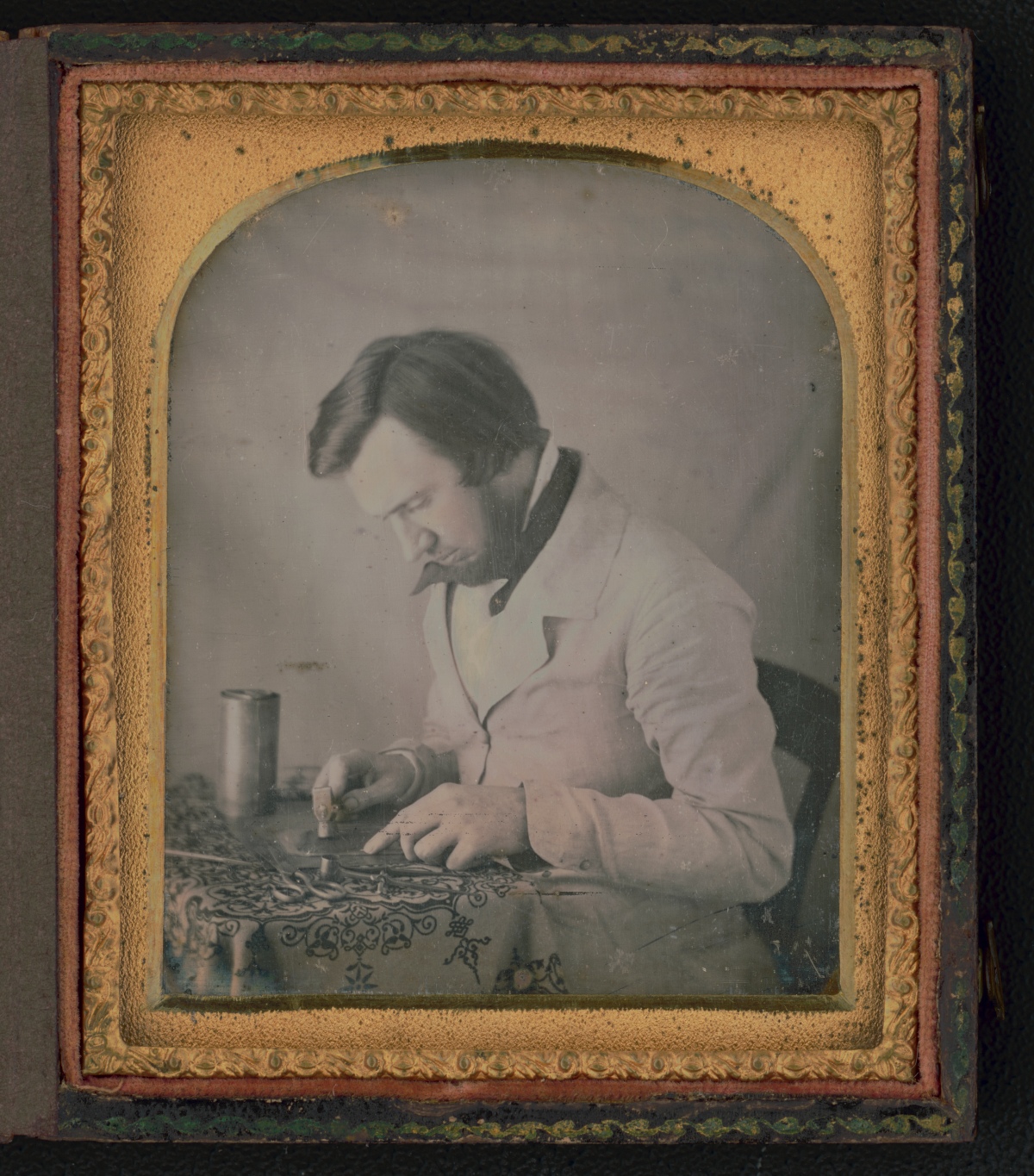
Custom-Made Fashions
The invention of the sewing machine in the 1830s was fraught with competition and problems. But, by the 1850s many seamstresses and even well-off households had their own machines after Singer came on the market and bought the patent rights for an earlier machine company’s special needle. The time saved on constructing women’s garments was put to use on elaborate decorations and fripperies of every kind. A new vision of fashion flourished with this technology. Even so, there were not yet assembly line factories driving fashion- it was still all made to measure.
This photo of a seamstress with her sewing machine shows a middle class woman with the trappings of a decent income: elegant clothing, lace collar, well-coiffed hair, and even earrings.
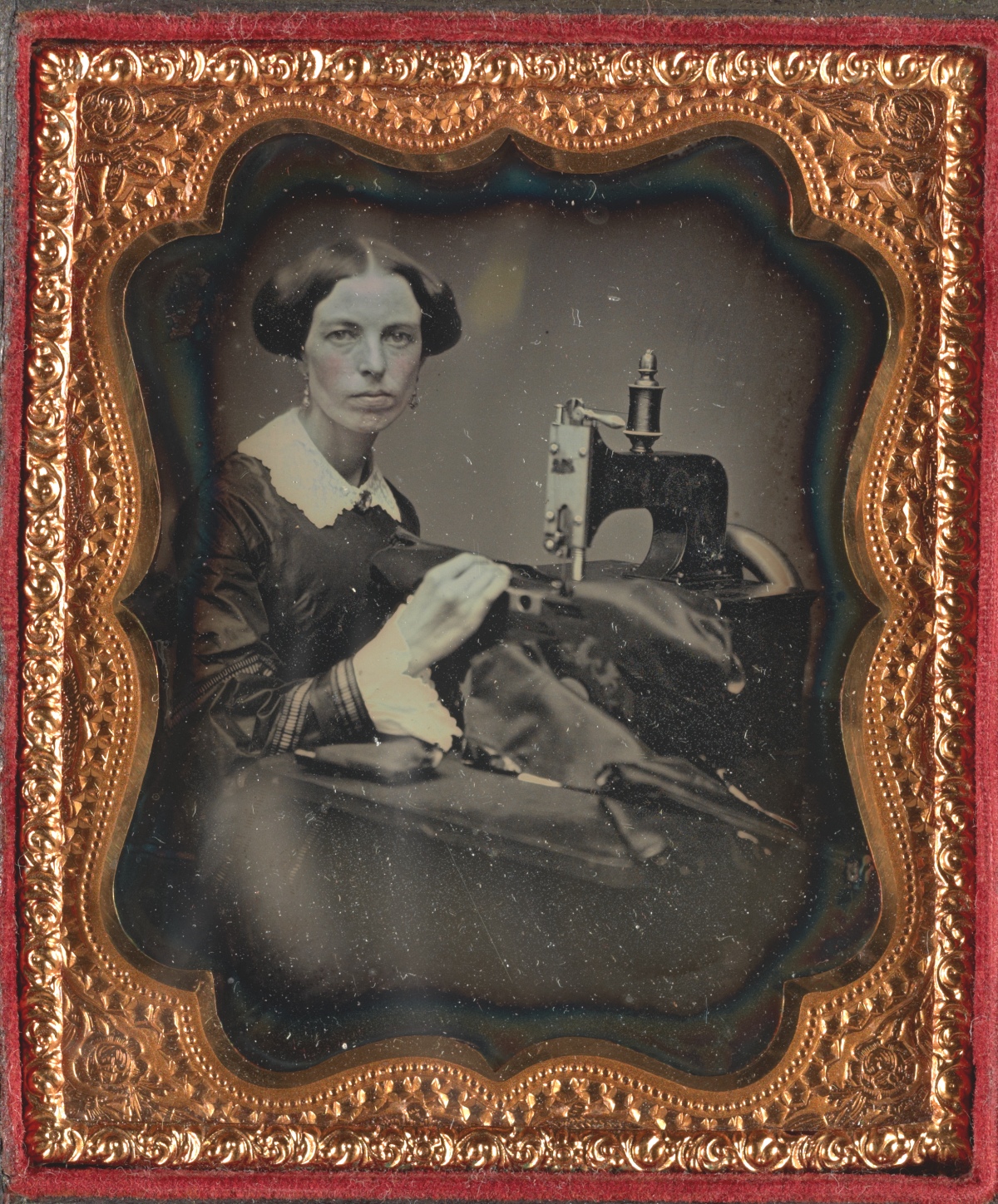
SKM: below-content placeholderWhizzco for DOT

